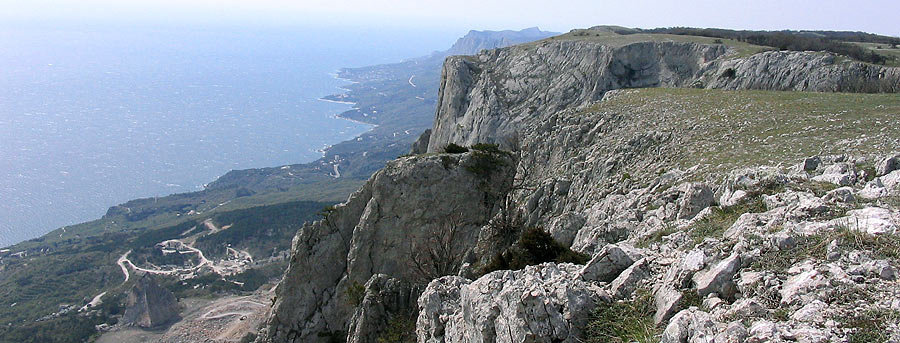Peter (Kielikeskus): “Laajimmin levinneitä kristillisperäisiä miesten nimiä koko maailmassa on Petrus variantteineen. Petrus on latinalainen asu kreikan nimestä Petros, joka puolestaan on käännös aramean sanasta keefa ‘kallio’. Raamatun mukaan Jeesus antoi tämän nimen Simon Joonanpojalle kutsuessaan hänet apostolikseen. Apostolilla on kaimoja joka puolella kristikuntaa: ranskan kielen Pierre, italian Pietro, espanjan Pedro, saksan ja englannin Peter, hollannin Pieter, norjan Peer, venäjän Pjotr, unkarin Péter, viron Peeter tai Peep jne. Suomalaisessa almanakassa ovat suomalaiset nimiasut Pietari, Petteri, Pekka, Pekko ja Petri sekä ruotsalaiset Peter ja Per.”
Petri – Peter – Pietari – Pierre – Pietro – Pjotr – Пётр – Петя – Pedro – Pieter – Peer – Péter – Peeter – Peep – Petteri – Pekka – Pekko – Per – Petrus – Petros
— keefa — kallio — Voit luottaa kuin kallioon — “Pää on kova kuin kivi”
Pietari Санкт-Петербург (Wiki) Saint Petersburg (Wiki):
At 1,234m, Ai-Petri is not the highest mountain in Crimea … but it’s certainly one of the most spectacular, with its sparkling white limestone peak and its jagged `teeth’. The peak is actually the weathered remains of a huge coral reef formed millions of years ago, when this area was under the sea, and although the limestone here is exceptionally dense – hence its longevity – fossils have been found in the rocks. In the 6th century BC greek settlers in the area called it the Mountain of the Ram, suggesting that they saw the mountain’s pointed summit as horns. Its later name, Ai-Petri, is also greek, meaning `sacred Peter’ or `sacred rock’, and derives from the christian monastery which stood on the plateau behind the peak until it was destroyed in the middle ages.
Ai-Petri weather